

Spices

spice stand at the Rissani souk
A spice is a dried seed, fruit, root, bark or vegetative substance used in nutritionally insignificant quantities as a food additive for the purpose of flavoring, and indirectly for the purpose of killing and preventing growth of pathogenic bacteria.

Many of the same substances have other uses in which they are referred to by
different terms, e.g. in food preservation, medicine, religious rituals,
cosmetics, perfumery or as vegetables. For example, turmeric is also used as a
preservative; licorice as a medicine; garlic as a vegetable and nutmeg as a
recreational drug.
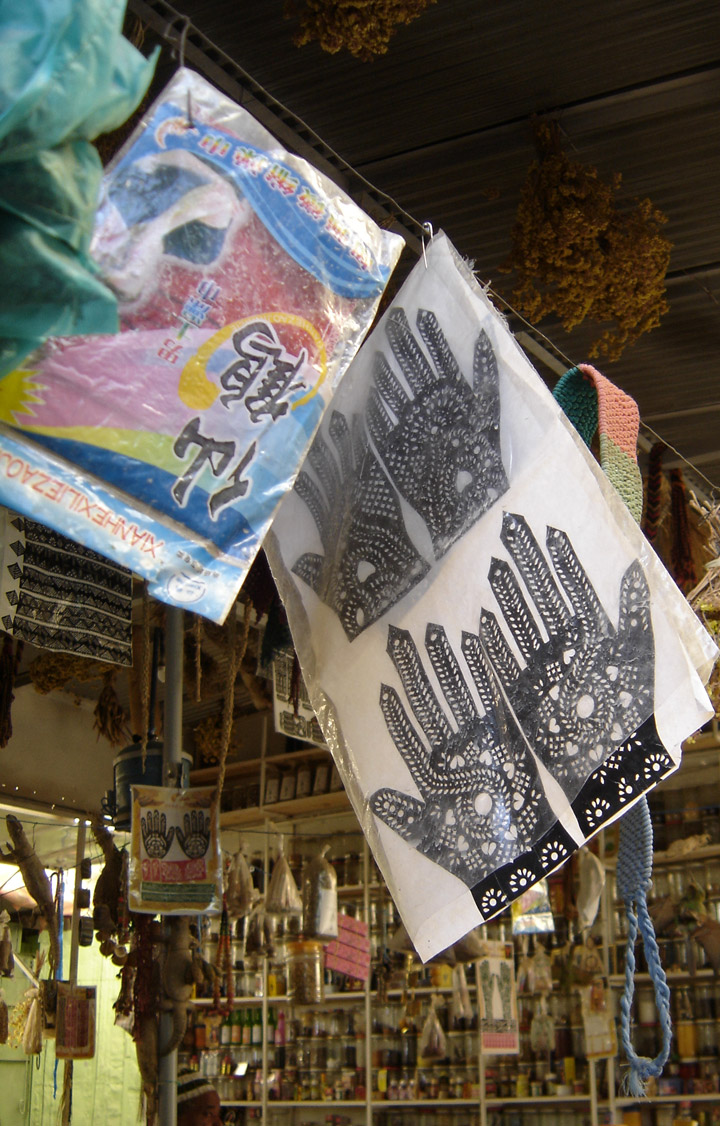
The Hand of Fatima
The Hamsa (Arabic: خمسة, Khamsa,
literally "five", Hebrew: חמסה, Khamsa) is a symbol used in amulets, charms and
jewelry to protect against the "evil eye."
An alternative Islamic name for this charm is the Hand of Fatima or Eye of
Fatima, in reference to Fatima Zahra, the daughter of Muhammad. An alternative
Jewish name is the Hand of Miriam, in reference to Miriam, the sister of Moses
and Aaron. It is a kind of "protecting hand" or "hand of God".
Some associate the significance of the five fingers to the five books of the
Torah for Jews, the Five Pillars of Islam for Sunnis, or the five People of the
Cloak for Shi'ites. This symbolism may have evolved at a later stage, in view of
the fact that archaeological evidence suggests the hamsa predates both
religions.
In recent years some activists for Middle East peace have chosen to wear the
hamsa as a symbol of the similarities of origins and tradition between the
Islamic and Jewish faiths. The fingers can point up or down.
The hamsa is widespread in Arab countries, and is sold in many different forms
in the marketplaces of Egypt, Morocco, Algeria and Tunisia. It is often painted
on the fronts of homes. Nevertheless, many Muslims regard this as a
superstition. They believe that only God (Allah) protects them, and the hamsa is
tantamount to shirk, or idolatry. The symbol may have originated in Punic
religion, where it was associated with Tanit. Hamsa plaques, often made of
turquoise-colored ceramics, are very common in modern Egypt.

Spices are distinguished from herbs, which are leafy, green plant parts used for
flavoring purposes. Herbs, such as basil or oregano, may be used fresh, and are
commonly chopped into smaller pieces; spices, however, are dried and usually
ground into a powder.

Salt is a very common seasoning, often mistakenly considered as a spice, but it
is in fact a mineral product.
The basic classification of spices is as follows:
* Leaves and/or branches of aromatic plants, all or part of the plant can be
used as one pleases. Basil, bay leaf, parsley, rosemary, tarragon, and thyme are
all good examples.
* Ripened fruits or seeds of plants. Examples include dill, fennel, mustard, and
pepper.
* Roots or bulbs of certain plants, garlic and ginger, for example.
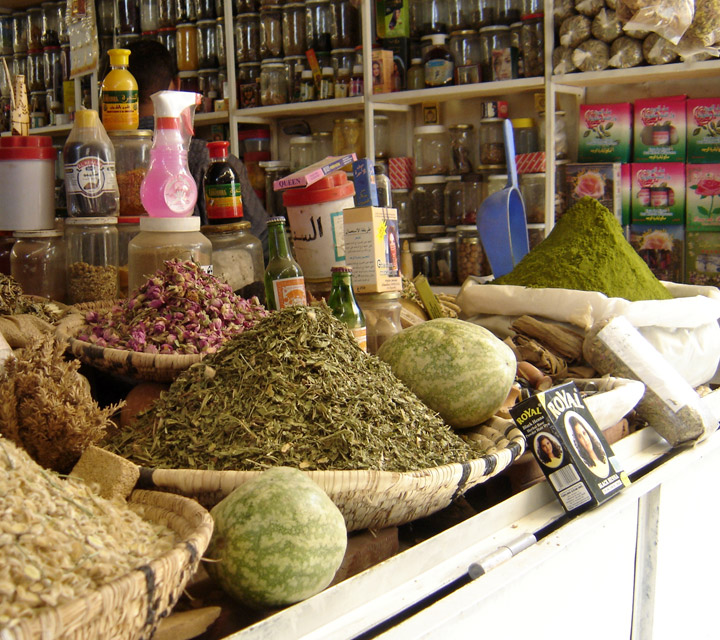
Spices have been prominent in human history virtually since their inception.
Spices were among the most valuable items of trade in the ancient and medieval
world. The culinary use of spices originated in the Indian Sub continent and
South-East Asia. In the story of Genesis, Joseph was sold into slavery by his
brothers to spice merchants. In the biblical poem Song of Solomon, the male
speaker compares his beloved to many forms of spices. Generally, Egyptian,
Chinese, Indian and Mesopotamian sources do not refer to known spices.
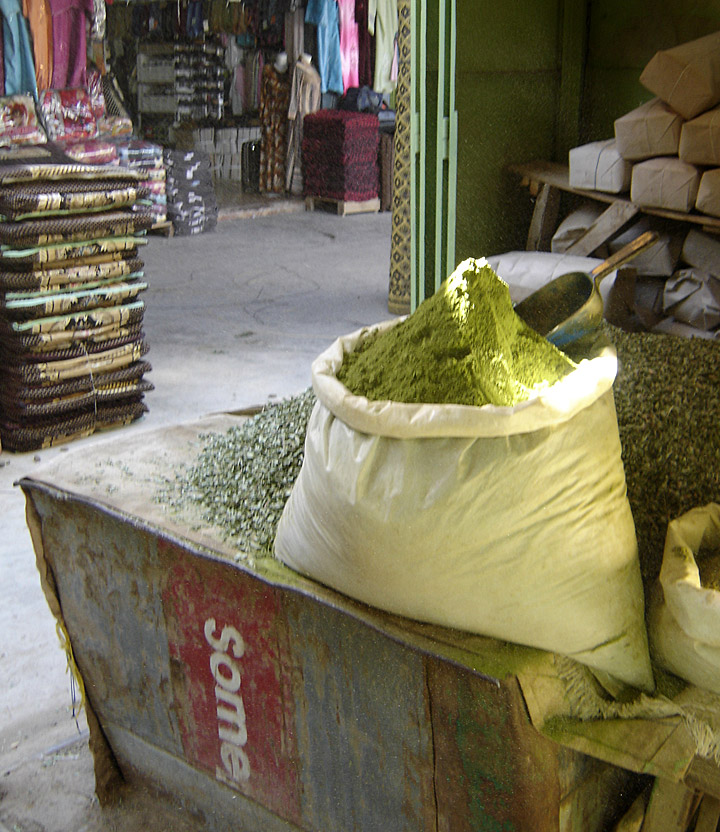
The spice trade developed throughout the Middle East in around 2000 BC with
cinnamon, Indonesian cinnamon and pepper.
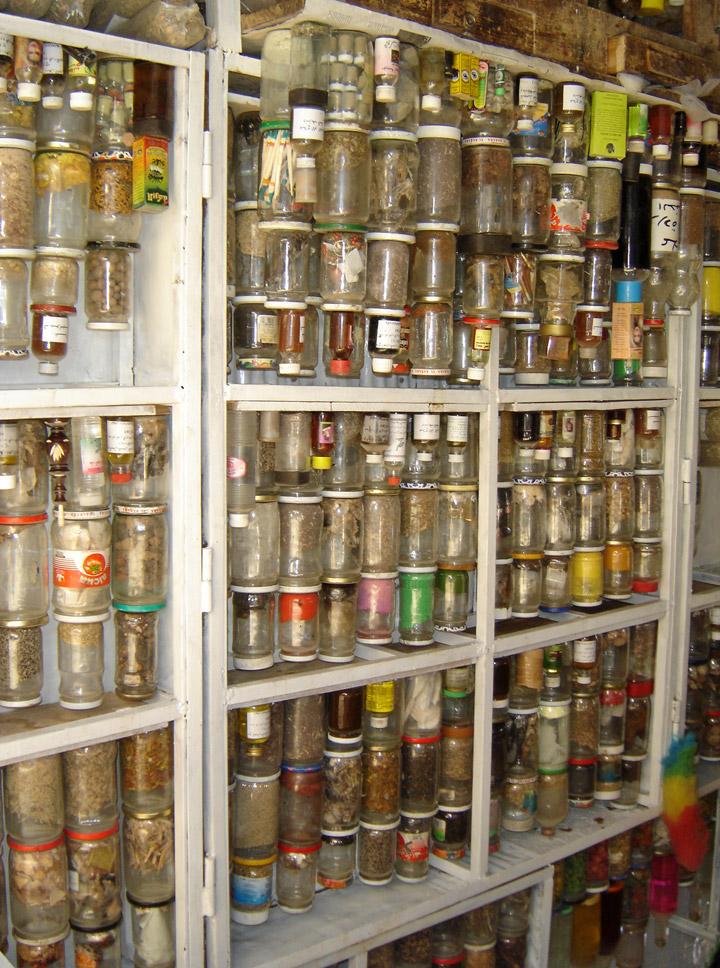
A recent archaeological discovery suggests that the clove, indigenous to the
Indonesian island of Ternate in the Maluku Islands, could have been introduced
to the Middle East very early on. Digs found a clove burnt onto the floor of a
burned down kitchen in the Mesopotamian site of Terqa, in what is now modern-day
Syria, dated to 1700 BC. The ancient Indian epic of Ramayana mentions cloves. In
any case, it is known that the Romans had cloves in the 1st century AD because
Pliny the Elder spoke of them in his writings.
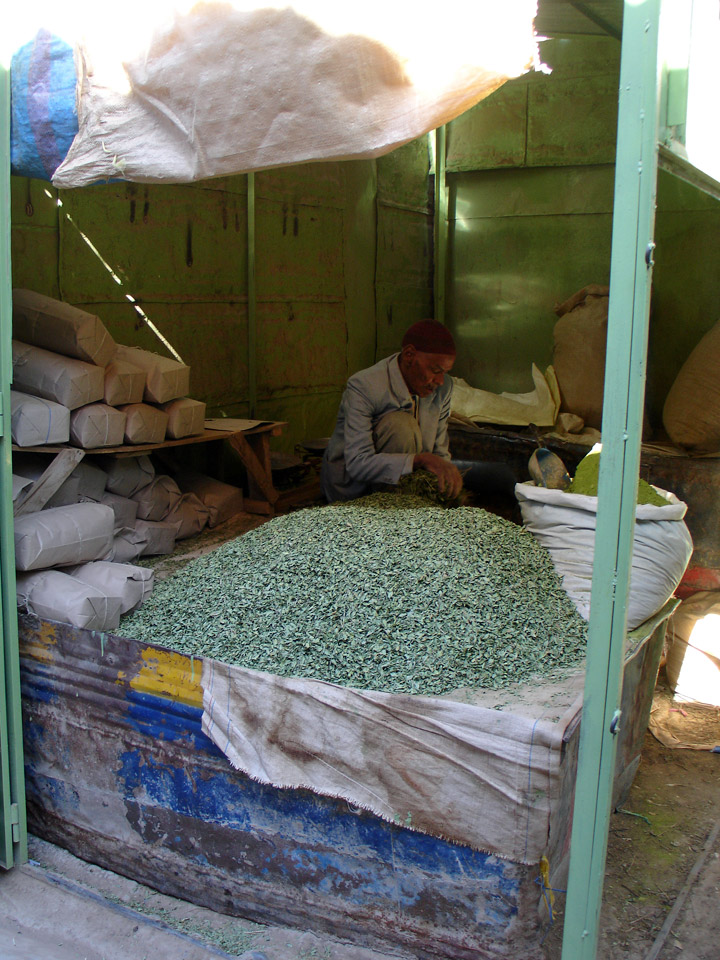
In South Asia, nutmeg, which originates from the Banda Islands in the Moluccas,
has a Sanskrit name. Sanskrit is the language of the sacred Hindu texts, this
shows how old the usage of this spice is in this region. Historians estimate
that nutmeg was introduced to Europe in the 6th century BC.

Indonesian merchants went around China, India, the Middle East and the east
coast of Africa. Arab merchants controlled the routes through the Middle East
and India until Roman times with the discovery of new sea routes. This made the
city of Alexandria in Egypt the main trading centre for spices because of its
port.
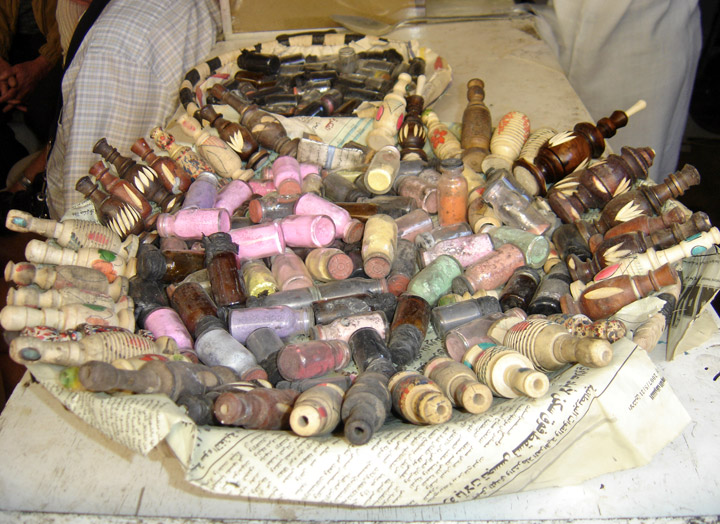
Spices were among the most luxurious products available in the Middle Ages, the
most common being black pepper, cinnamon (and the cheaper alternative cassia),
cumin, nutmeg, ginger and cloves. They were all imported from plantations in
Asia and Africa, which made them extremely expensive. From the 8th until the
15th century, the Republic of Venice had the monopoly on spice trade with the
Middle East, and along it with the neighboring Italian city-states. The trade
made the region phenomenally rich. It has been estimated that around 1,000 tons
of pepper and 1,000 tons of the other common spices were imported into Western
Europe each year during the Late Middle Ages. The value of these goods was the
equivalent of a yearly supply of grain for 1.5 million people. While pepper was
the most common spice, the most exclusive was saffron, used as much for its
vivid yellow-red color as for its flavor. Spices that have now fallen into some
obscurity include grains of paradise, a relative of cardamom which almost
entirely replaced pepper in late medieval north French cooking, long pepper,
mace, spikenard, galangal and cubeb. A popular modern-day misconception is that
medieval cooks used liberal amounts of spices, particularly black pepper, merely
to disguise the taste of spoiled meat. However, a medieval feast was as much a
culinary event as it was a display of the host's vast resources and generosity,
and as most nobles had a wide selection of fresh or preserved meats, fish or
seafood to choose from, the use of ruinously expensive spices on cheap, rotting
meat would have made little sense.
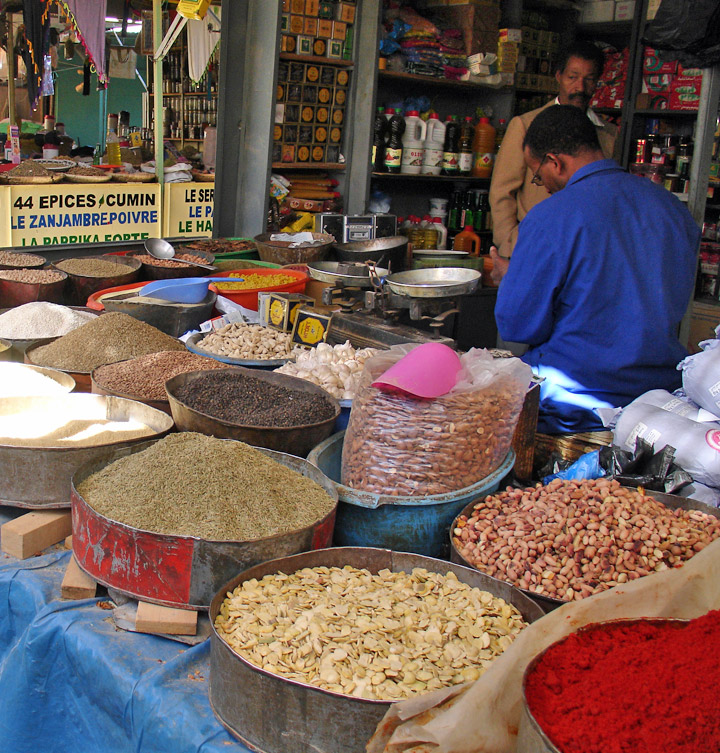
Spices are used extensively in
Moroccan food. While spices have been imported to Morocco for thousands of
years, many ingredients, like saffron from Tiliouine, mint and olives from
Meknes, and oranges and lemons from Fez, are home-grown. Common spices include
karfa (cinnamon), kamoun (cumin), kharkoum (turmeric), skingbir (ginger), libzar
(pepper) , tahmira (paprika), anis seed, sesame seed, kasbour (coriander),
maadnous (parsley), zaafrane beldi (saffron) and mint.
Text from Wikipedia
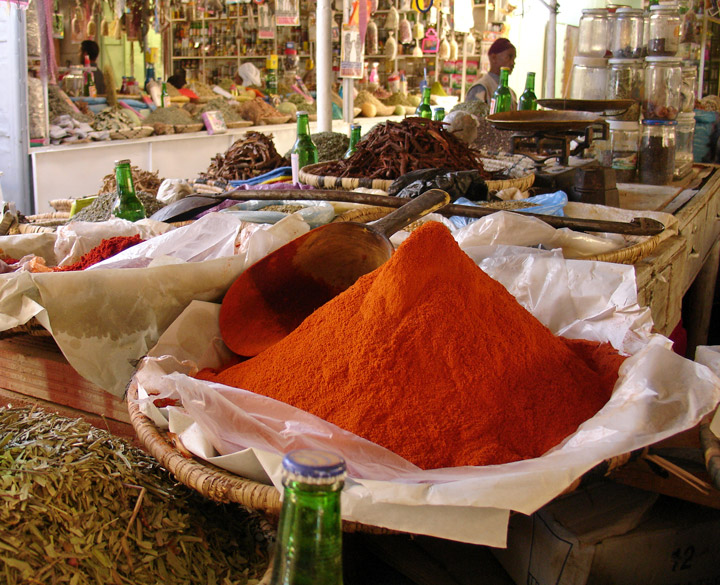
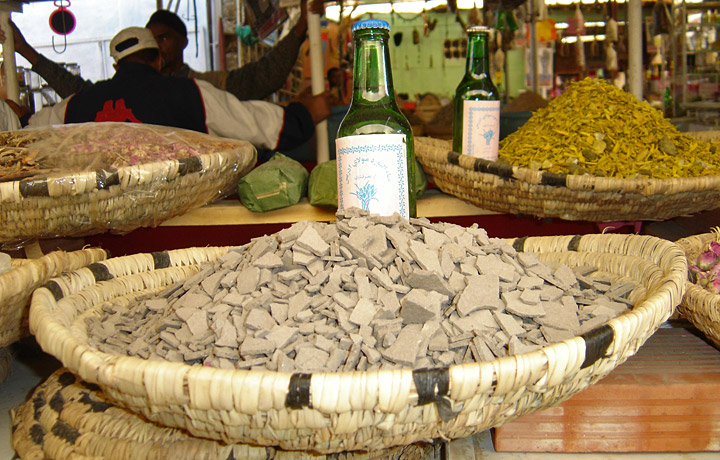
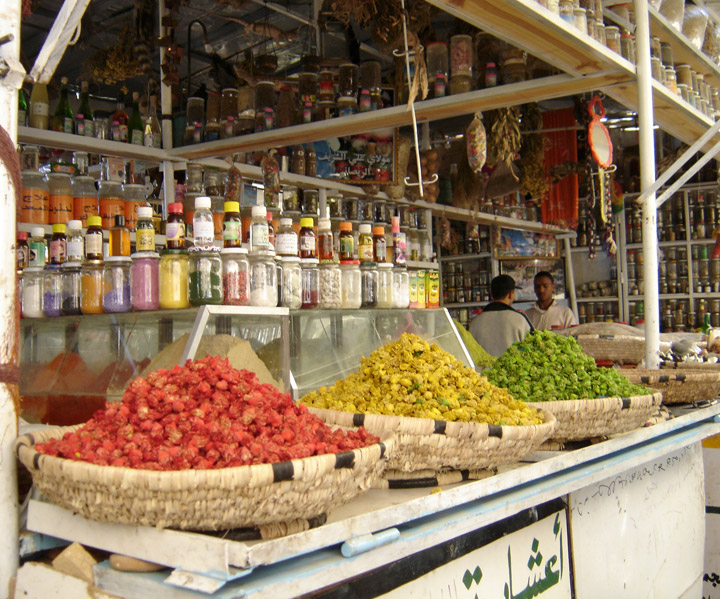
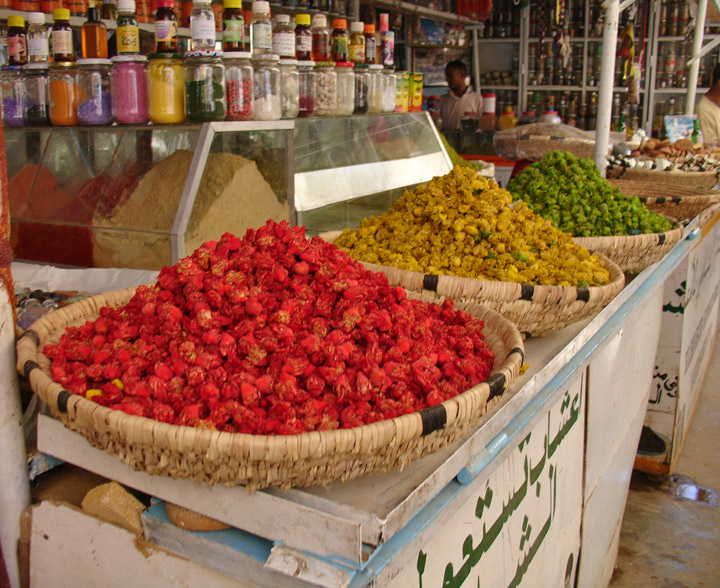

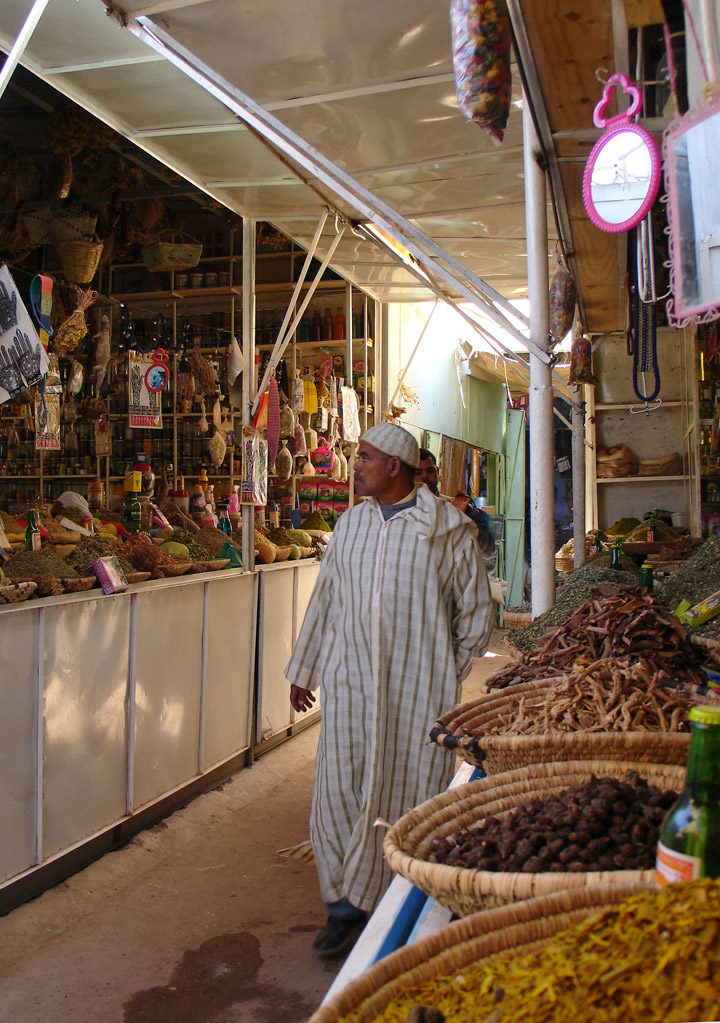
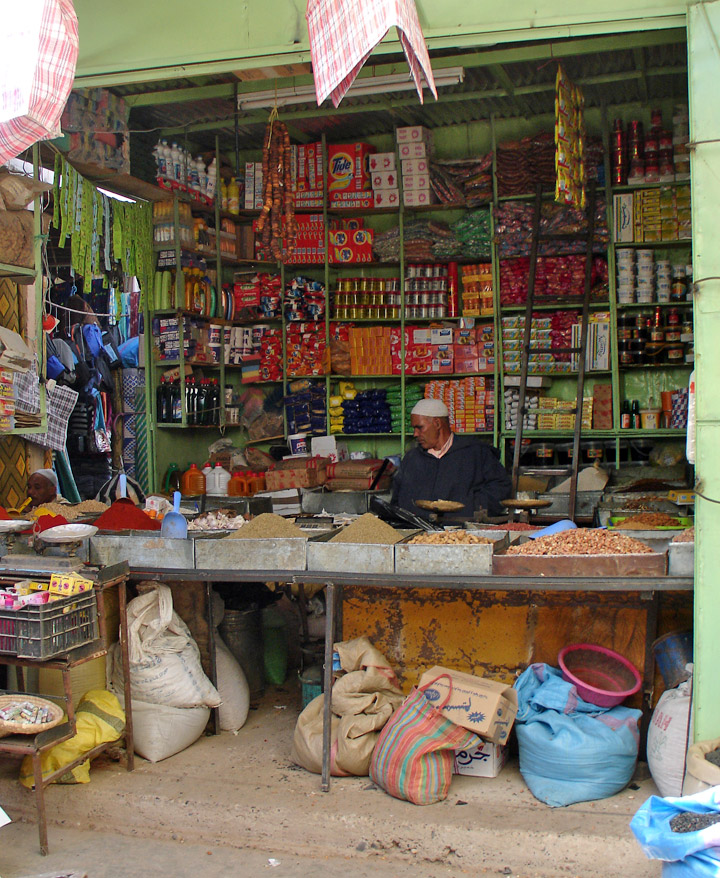
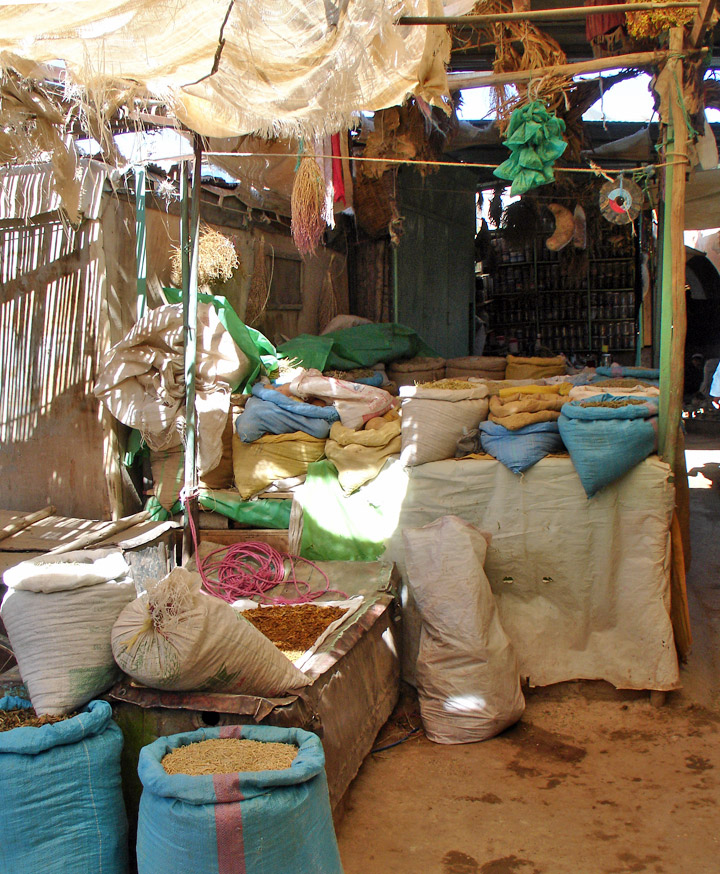
Other Souk Merchants
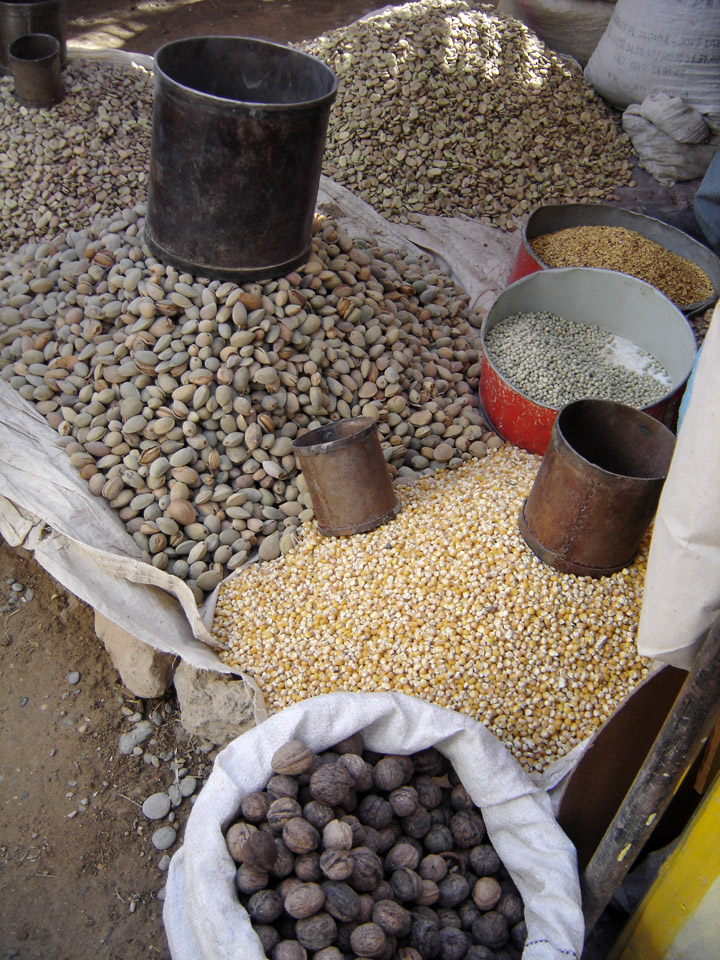
nuts and grain
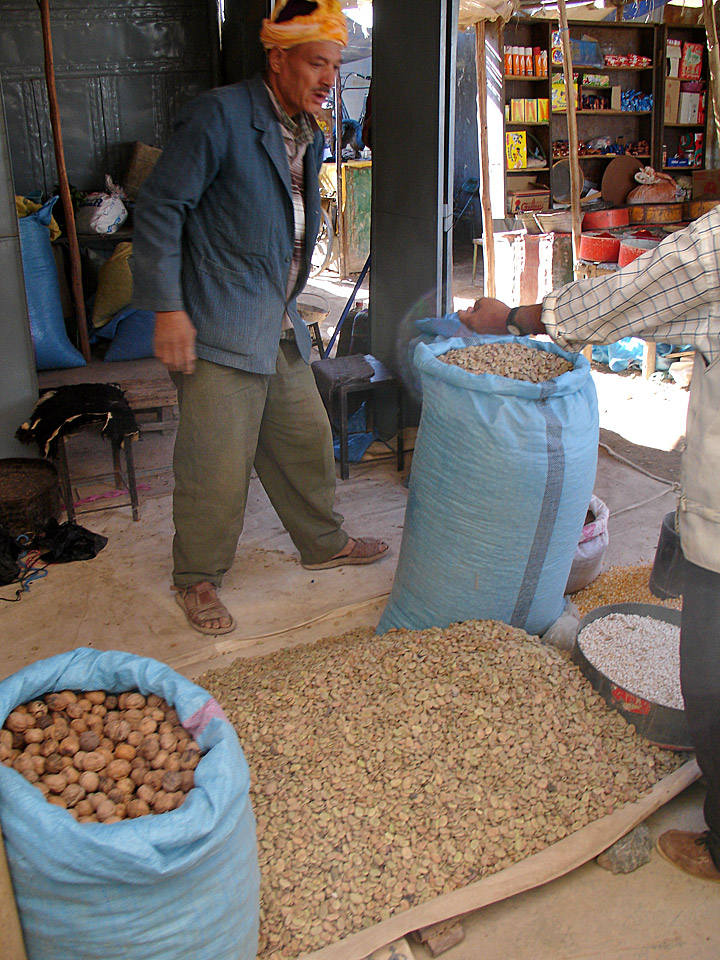
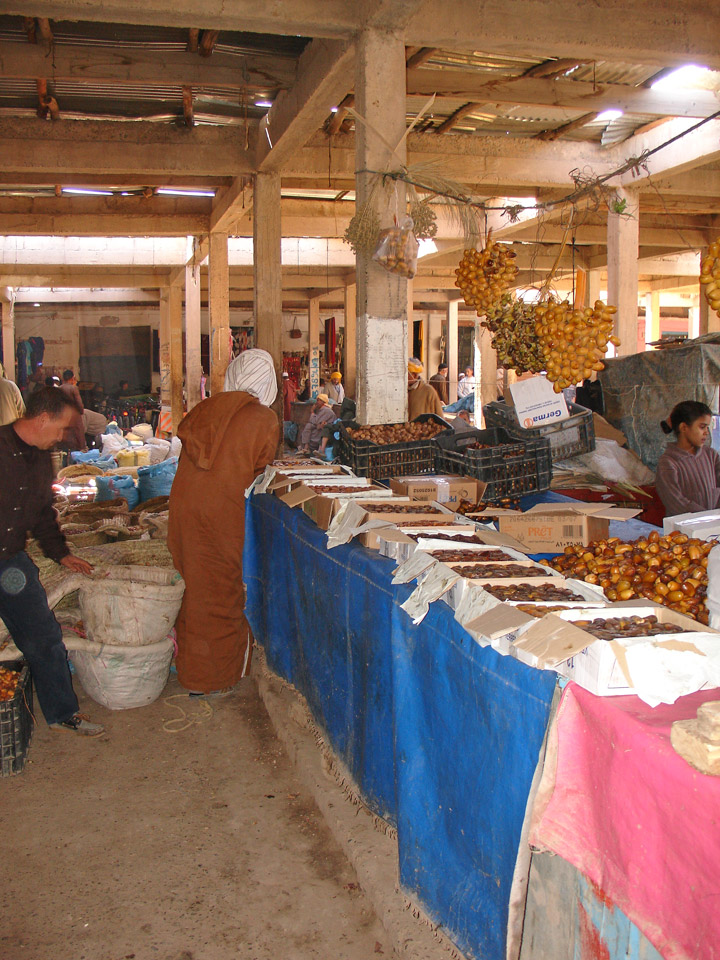
dates
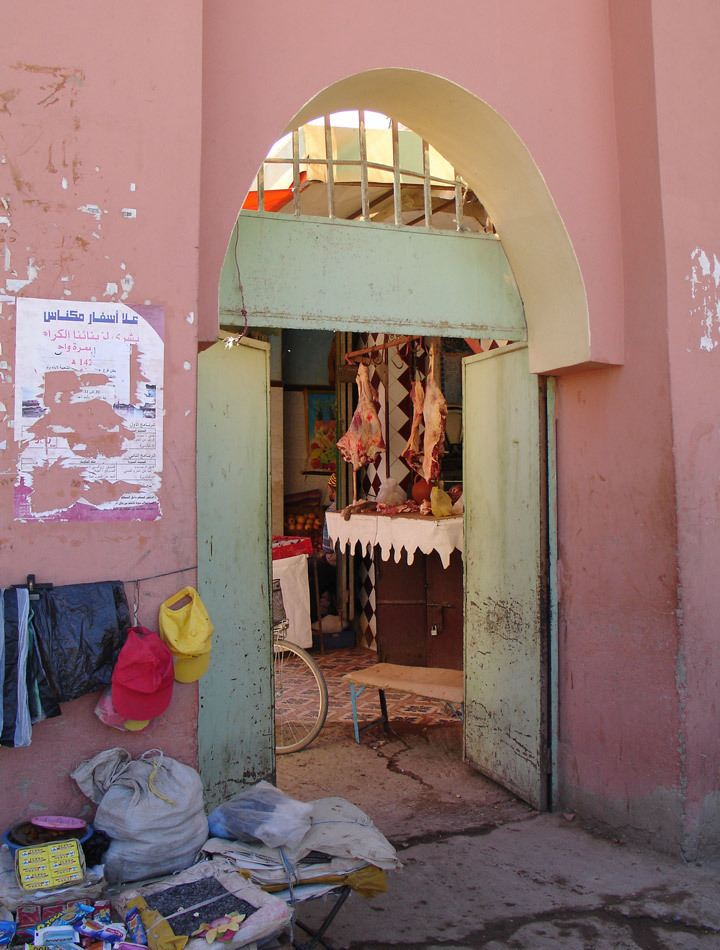
lamb
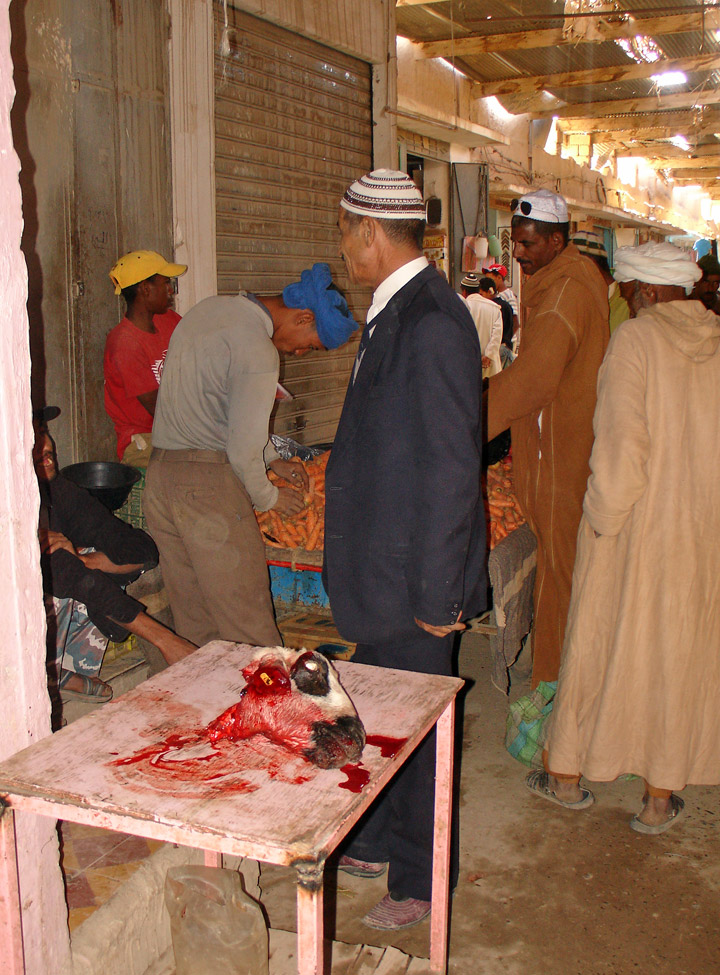
only the head remaining
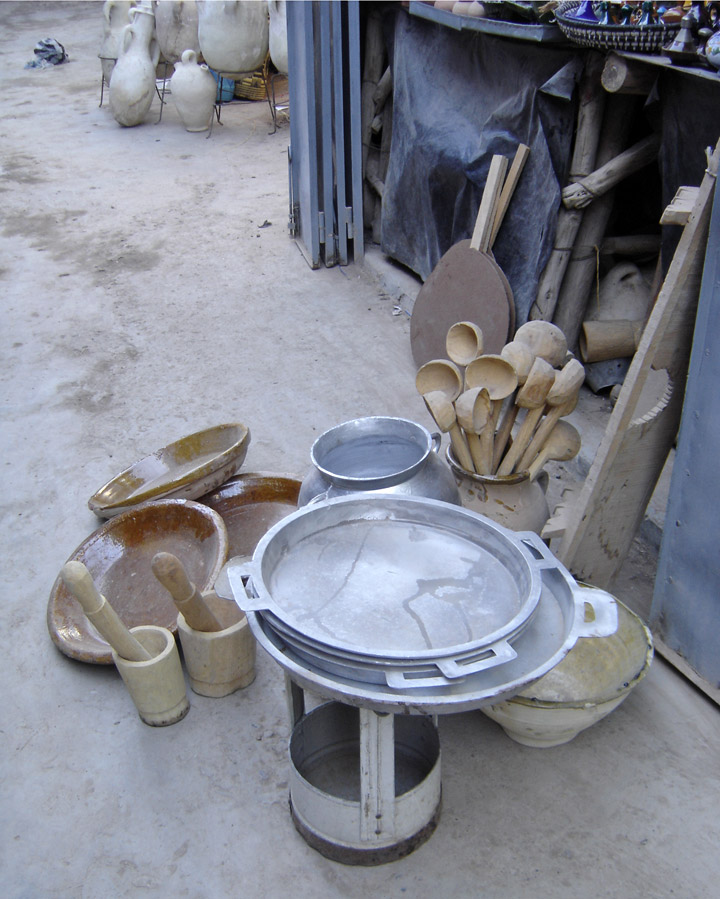
Mortar and Pestle for grinding the spices
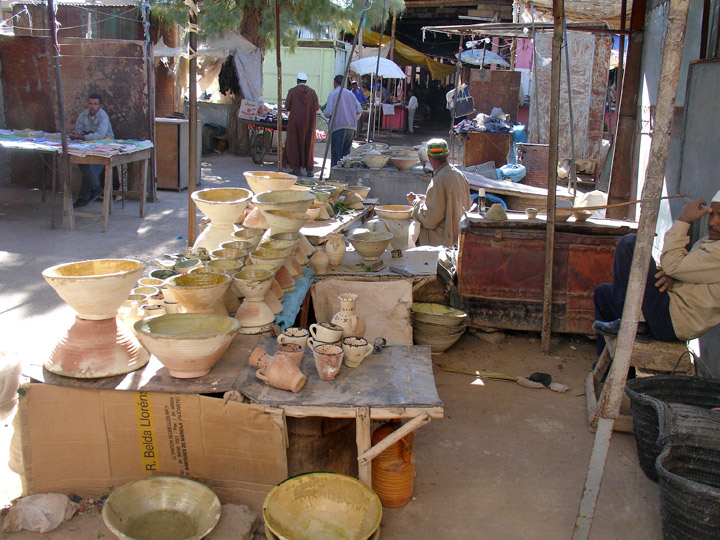
pottery

house furnishings
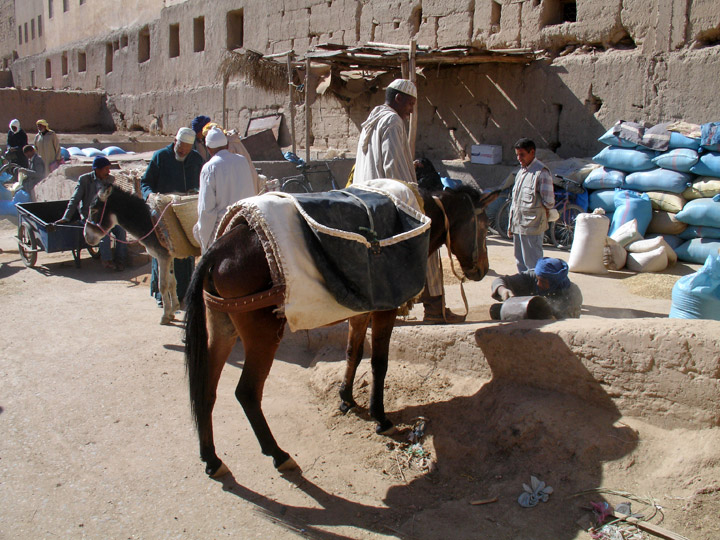
all brought into the souk by mules
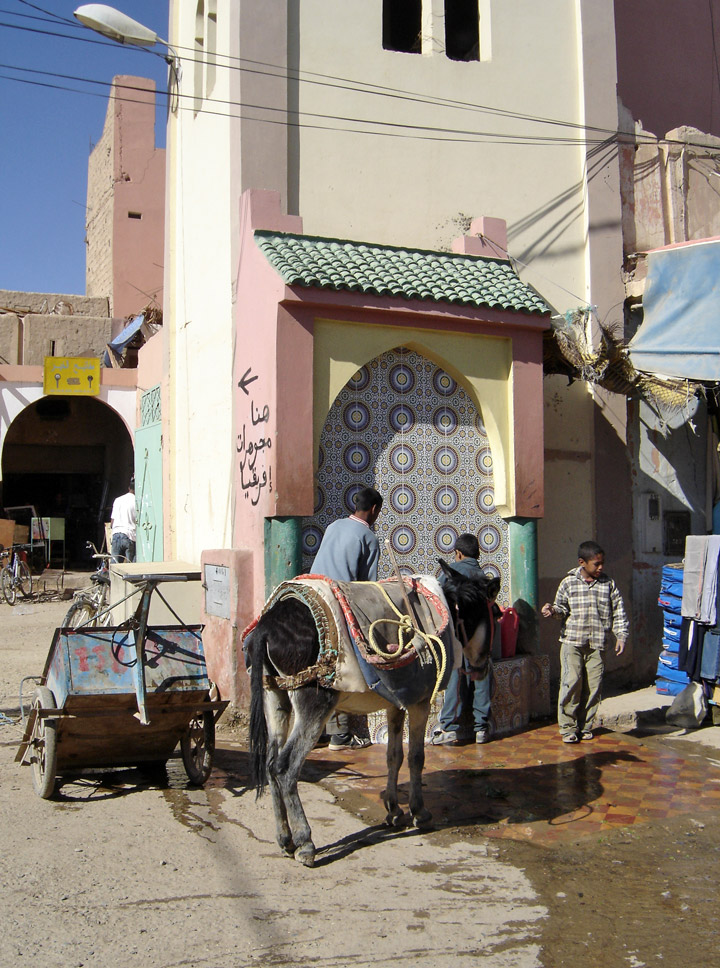
but they also get to drink